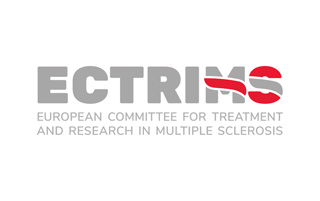
Long, non-coding RNA signatures to distinguish relapsing-remitting and progressive forms of multiple sclerosis
October 2023 – Poster Presentation
Cheryl L. Sesler1, Lukasz S. Wylezinski1,2, Guzel I. Shaginurova1, Elena V. Grigorenko1, Franklin R. Cockerill, III1,3, Michael K. Racke4, and Charles F. Spurlock, III1,2,5
1 Decode Health, Nashville, TN, USA
2 Department of Medicine, Vanderbilt University School of Medicine, Nashville, TN 37203
3 Department of Medicine, Rush University Medical Center, Chicago, IL 60612
4 Quest Diagnostics, Secaucus, NJ, USA
5 Wagner School of Public Health, New York University, New York, NY 10012
Introduction. Diagnosing multiple sclerosis (MS) and classifying into relapsing-remitting (RR), primary progressive (PP), or secondary progressive (SP) subtypes can be difficult and costly in the backdrop of accumulating neurological damage. Blood-based RNA signatures for MS subtypes may provide an alternative for earlier diagnosis and monitoring of progression. Evidence is emerging that long non-coding RNAs (lncRNAs) play an important role in the development of complex disease and are shown to be dysregulated in MS. We hypothesize that lncRNA expression can differentiate MS subtypes and could assist clinicians in MS classification.
Objectives/Aims. We aim to identify differentially expressed lncRNAs as candidate biomarkers and examine associated biological pathways in RRMS, SPMS, and PPMS.
Methods. Total RNA sequencing was performed using whole blood collected into PAXgene Blood RNA tubes (n=6 per cohort) for the following groups: healthy controls (HC), patients with a clinically isolated syndrome who transitioned to MS (CIS), RRMS prior to treatment, SPMS, PPMS, and neuromyelitis optica (NMO) prior to treatment. Differential gene expression and pathways analysis were performed across case/control comparisons.
Results. Approximately 200 unique differentially expressed (DE) genes were identified comparing all possible combinations of MS subtypes, HC, and NMO cohorts. While protein-coding mRNAs comprised >50% of these DE genes, lncRNAs exhibited greater expression differences. RRMS genes were associated with epigenetic modifications and DNA repair mechanisms, while progressive MS genes were related to sphingolipid biosynthesis (SPMS) and inhibition of anti-inflammatory responses (PPMS). In addition, analysis of DE genes in MS and HC identified more than 250 candidate RNA biomarkers correlated with MS disease progression (CIS, RRMS, and SPMS).
Conclusion. We identified putative candidate biomarkers for each MS subtype, and our findings support the hypothesis that lncRNA expression profiles can be used to differentiate MS subtypes. Identification of candidate lncRNA biomarkers could inform future validation studies, novel clinical assay development to efficiently diagnose and monitor MS, and potential drug targets/pathways to improve clinical intervention and MS outcomes.
















